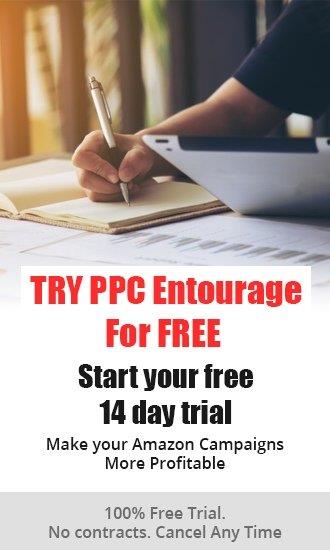Every Amazon seller knows that in order to succeed, his or her business must generate at least 'decent' profit margins, with hopefully, the majority of sellers seeking to have good to great ones.
There are however, a surprisingly large number of sellers trying to achieve these goals with only a vague idea of what their actual margins consist of, or even worse, their assessments of their profitability lies more in the realm of "educated guesses" because they lack a reliable software tool which can provide actionable information, by pin-pointing the true costs associated with each product on a granular level.
If an Amazon seller doesn't have a constant finger on the pulse on their profitability by SKU, it can be difficult to make the necessary changes to inventory management, prompt product sourcing, or vendor negotiations.
Recent Changes by Amazon May Raise Costs for Many Sellers
As of February 2019, Amazon has...
Changed the dimensional billing weight calculation for oversize items. Amazon now applies a minimum width and height of 2 inches when calculating dimensional weight for oversize items, to align with packaging costs.
Implemented small increases in fulfillment fees for products that measure outside of the small standard-size and large standard-size tiers (items with a shipping weight of 10 oz or less), to reflect fulfillment and transportation cost changes.
Introduced separate fulfillment fees for items that can be sold only through the FBA Dangerous Goods (Hazmat) program, which require special handling and storage. (Lithium batteries and items that contain or are sold with them, are subject to an $0.11 cent per-unit fee in addition to regular fulfillment fees.)
Types of Margins Sellers Will Encounter on Amazon
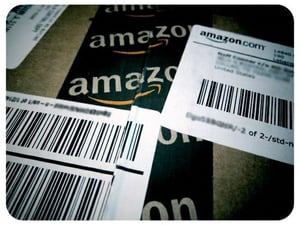 There are two types of profit margins on Amazon: operating, and gross.
There are two types of profit margins on Amazon: operating, and gross.
Operating margin is how much money you can put back into the business after sales (it includes fees and expenses).
Gross margin calculates all the fees in totality from start to finish. These include: Seller Account Fee, this is the amount a seller pays Amazon each month to have a Seller Account. (The basic plan charges $0.99 per item sold, while the Professional plan charges $39.99 for unlimited sales), Referral Fee, Amazon charges a fee on every sale made (a percentage of the product’s price), FBA (monthly inventory storage fee, and fulfillment fee per unit), and Variable Closing Fee, this is the amount charged on shipping an item and gets taken off the grand total of the sale.
Do You Know Your Costs?
If someone were to ask you if you knew your exact costs at the SKU level, would you be able to say yes? Sometimes, even the most organized Amazon sellers are missing out on hidden costs affecting their bottom lines.
Knowledge is power.
Knowing the numbers of what your products are costing you is the first step in calculating and maintaining strong margins.
Cost is obviously a key component of profitability. Sellers have to keep an eye on costs to make sure that they don’t surpass generated revenues and wipe out profits. Sellers must determine their net profit margins (the difference between revenue and the cost of goods, divided by total revenue).
There’s no exact benchmark for this figure, because profitable margins vary by niche and selling volumes (a low margin product can still generate profits if enough are sold). Generally speaking, healthy margins are close to your niche’s average and gradually increase over time.
The key to maintaining a healthy net profit margin is in monitoring costs. Sellers have to know when their expenses increase, so that they can maintain and improve their margins by increasing revenue or lowering costs.
Types of Costs
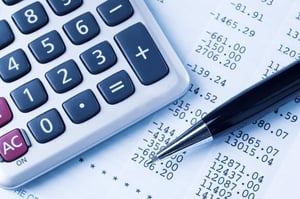 Direct costs - acquisition cost per SKU, including shipping.
Direct costs - acquisition cost per SKU, including shipping.
Indirect (overhead) costs - warehouse costs, product samples, utilities, insurance, bookkeeping, payroll and benefits, business travel, corporate business tax, product samples, web development, etc.
Amazon fees - sales commission, FBA fees, FBA inbound shipping fees, commission on returned product, storage fees, return shipping costs (both from customer to Amazon fulfillment centers, and from fulfillment centers to you), and returns disposal costs.
Costs for handling returns once they are received. What write-down or write-off costs do you incur by not being able to sell these returned products as new-condition products?
All Amazon fees can be pulled in 1-2 week time frames out of Seller Central (Seller Central > Reports > Payments > All Statements View). Be sure to monitor any slow-moving SKUs, as stale inventory can rack up additional fees.
Summary of an Amazon seller's costs:
- Wholesale cost.
- Inbound/outbound shipping.
- Amazon commissions.
- FBA fees.
- Overhead cost allocation.
- Returns-related costs.
Commonly missed profitability leaks unique to Amazon sellers:
- Returned items that are lost or damaged. (Occasionally, items returned by customers are either lost or damaged in transit and the seller of those items never receives them).
- A seller doesn't receive his or her refunds. (When a customer returns one of your products to Amazon, Amazon immediately refunds the customer the amount they paid for the item. However, occasionally that refunded payment never makes it back to the seller’s account).
- Amazon does not receive your shipments in full. (It’s common for parts of a shipment to get lost or damaged along the way to Amazon’s fulfillment centers. It’s crucial to confirm the SKUs you've sent to FBA match up with the shipment Amazon has received).
- The SKU quantity sent from your vendor is incorrect. Confirm, confirm and reconfirm again that the quantity you receive from your vendor is the same as the quantity you are expecting).
How to Reduce Fees and Other Costs to Increase Profit Margins
Storage Fees
Amazon has fulfillment centers, not warehouses.
Slow moving products on Amazon eat into profits, making inventory a critical area to examine. Every seller should ask themselves this question... how much inventory is stored with Amazon and how long does it stay there?
Storage costs can be substantial if product turnover is drawn out too long. Amazon doesn’t want to store your products a single second longer than they have to. Sellers that have products that take up valuable real estate in their packaging centers risk a higher loss on profit margins.
In 2018, Amazon sought to discourage inactive product inventory by increasing storage fees and changing their long-term storage fee structure from billing every 6 months to every single month. (By moving from a semi-annual assessment to a monthly basis, fees increased by an average of 6%.)
Sellers should look at which products are absorbing most of the storage fees and think about if it makes sense to move on from them because they are cutting into profit margins when they aren’t moving off the shelves.
ROI is more than just the difference between the price an item sells for on Amazon and the price you can obtain it for. This may seem obvious to some sellers, but many beginners don’t realize this and invest in inventory that has no hope of turning a profit.
Closely monitor the sales numbers for a set period of time (1-3 months), to evaluate which products are doing well and which ones might need to be scrapped. If you find certain items are hanging around Amazon warehouses and collecting long-term storage fees, a way to increase your profit margins on them might be to lower the prices, or bundle the products with something else, to get rid of them as quickly as possible instead of paying long-term storage fees.
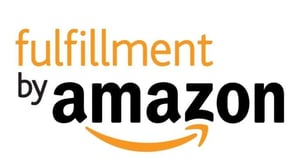 Make Sure Amazon Isn’t Charging You Incorrectly
Make Sure Amazon Isn’t Charging You Incorrectly
FBA Fees
One of the easiest ways for sellers to increase profit margins is to identify inaccurate charges by making sure Amazon is charging correctly for shipping costs. FBA (Fulfilled By Amazon) shipping fees vary based on package sizes, but automatic categorization or human error can dramatically impact Amazon charges.
(There are cases of one item having two shipping weights simply because an order was filled at different Amazon fulfillment centers. Sometimes, a color variation on identical products results in disparate descriptions because the weight information is input separately, also leading to variable shipping costs.)
It’s up to sellers to check the size, weight and description of their Stock Keeping Units (SKUs) regularly so they don’t become victims of inequitable charges.
Sellers that discover inconsistencies, should contact Amazon and ask them to re-weigh and remeasure the products and reimburse them for the mistake, in order to realize substantial savings across multiple orders.
How to Minimize the Impact of Returns on Your Profit Margins
Returns
You can expect product returns as a normal part of selling online, but for Amazon sellers, this can bring with it additional bad news. First, a lot of sellers will usually lose on the return, second, if a seller gets too many returns, he or she may end up losing their good standing with Amazon. More than one seller has found themselves suspended for having too many product returns.
Amazon makes mistakes. Discrepancies have been known to happen and it’s up to you as the seller to notice and contact Amazon over it.
Anything returned that is still sellable goes right back into your inventory. Anything “damaged/defective” is stored as “unfulfillable” and just sits there until you create a removal or disposal order.
If an item is put back in your inventory, you should receive a credit for the return. If it is defective, you should get the item back. If you notice neither of these things have happened, you should ask Amazon to investigate. Open a claim and ask them to tell you either where your item is, or why you haven’t been given credit for the return.
It’s always a good idea to monitor returns closely to ensure that:
- The product is actually returned.
- You are credited for returns which the customer doesn’t send in.
- Sellable products are available in inventory.
- Products which aren’t sellable are removed so you’re not paying for storage.
- You are aware of any quality issues.
Sellers should be extremely proactive to make sure that in the future they have fewer and fewer returns. You want to know exactly why things are being returned and analyze these issues so you can cut down on future returns and maintain your margins more effectively.
It’s crucial to monitor return rates and return-related costs because occasionally those costs will actually be high enough to warrant removing the products from your catalog.
Once you identify the offenders, you can find the cause of each return and take appropriate action, keeping the customer front and center (an eye on your returns helps you to better serve your customers), while moving swiftly to ensure that the returns don’t eat deeply into your profit margins.
Sellers should also consider a third-party solution that can track costs on a SKU-by-SKU basis, because Seller Central’s reports are often not thorough enough, and spreadsheets can be a pain to update and manage.
PPC Ad Spend
Sponsored Products advertising can sometimes get out of control. It is essential for sellers to maintain their ad spend Margin Impact between 6%-11%...otherwise, it may have an overall negative impact on their profit margins.
Promo Fees
Coupons and promotions are a great way to boost sales, but it can be easy to lose sight of how your profitability is affected. Sometimes it’s just not worth it, but sellers can be in the dark if not shown the true impact of promotions (the target is 1%-5%).
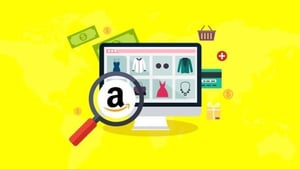 The reality of selling on Amazon in 2019 and beyond is that it's probably going to get more expensive. Selling and fulfillment fees will be increasing as Amazon passes on its rising operational costs to the sellers. Competition will also continue to grow as more and more individuals and brands gravitate to the unparalleled opportunity that the Amazon marketplace offers.
The reality of selling on Amazon in 2019 and beyond is that it's probably going to get more expensive. Selling and fulfillment fees will be increasing as Amazon passes on its rising operational costs to the sellers. Competition will also continue to grow as more and more individuals and brands gravitate to the unparalleled opportunity that the Amazon marketplace offers.
Bottom line...the sellers who will not only survive these powerful on-going forces but actually thrive despite them, will have at their fingertips, a well-defined strategic business plan (or hire a team of experts to manage their business), software that allows them to save precious time and money, and most certainly, they will work diligently to know their costs on a granular level.








